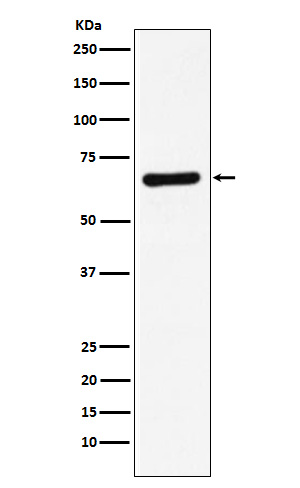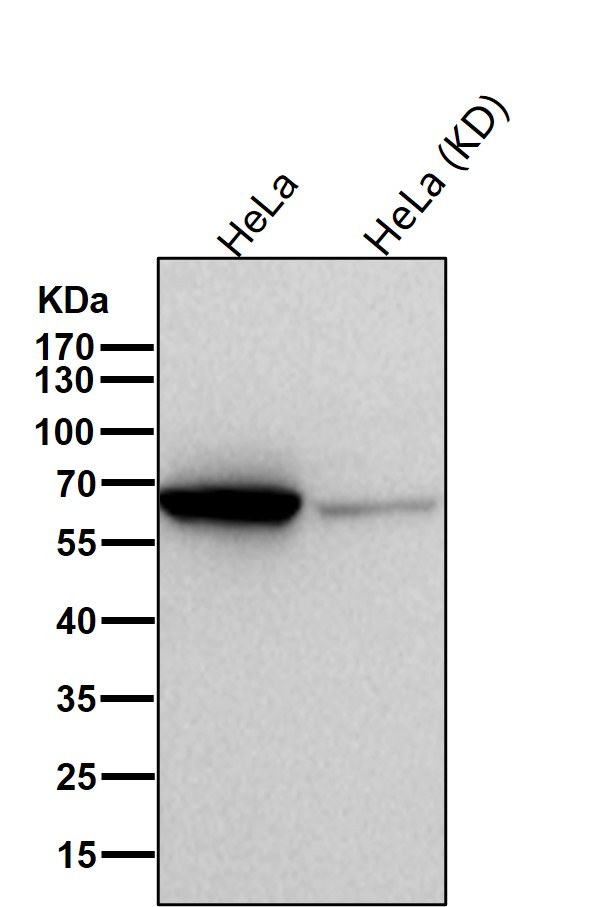

| WB | 1/1000-1/2000 | Human,Mouse,Rat |
| IF | 咨询技术 | Human,Mouse,Rat |
| IHC | IHC:1/100-1/200;IHF:1/50-1/200 | Human,Mouse,Rat |
| ICC | 1/50-1/200 | Human,Mouse,Rat |
| FCM | 咨询技术 | Human,Mouse,Rat |
| Elisa | 咨询技术 | Human,Mouse,Rat |
| Aliases | P67; NSEC1; UNC18; RBSEC1; MUNC18-1;;Syntaxin binding protein 1 |
| WB Predicted band size | Calculated MW: 68 kDa ; Observed MW: 65 kDa |
| Host/Isotype | Rabbit IgG |
| Antibody Type | Primary antibody |
| Storage | Store at 4°C short term. Aliquot and store at -20°C long term. Avoid freeze/thaw cycles. |
| Species Reactivity | Human,Mouse,Rat |
| Immunogen | A synthesized peptide derived from human Syntaxin binding protein 1 |
| Formulation | Purified antibody in PBS with 0.05% sodium azide,0.05% BSA and 50% glycerol. |
+ +
以下是关于STXBP1抗体的参考文献示例(部分为假设性示例,供参考):
1. **"STXBP1 mutations cause epileptic encephalopathy via impaired synaptic vesicle release"**
*作者:Saitsu H., et al.*
**摘要**:研究通过Western blot和免疫组化分析STXBP1突变患者的脑组织,利用特异性抗体发现突变导致蛋白表达减少,影响突触囊泡释放机制,与婴儿癫痫相关。
2. **"Autoantibodies to STXBP1 in autoimmune encephalitis alter neuronal excitability"**
*作者:Dalmau J., et al.*
**摘要**:报道在自身免疫性脑炎患者血清中发现STXBP1自身抗体,通过体外实验证实这些抗体干扰突触前膜蛋白功能,导致神经元过度兴奋。
3. **"Development and validation of a high-affinity monoclonal antibody for STXBP1 detection"**
*作者:Chen Y., et al.*
**摘要**:开发了一种新型STXBP1单克隆抗体,验证其在免疫沉淀和免疫荧光中的高特异性,为神经疾病诊断提供工具。
4. **"STXBP1 expression dynamics in early brain development revealed by antibody-based imaging"**
*作者:Wang L., et al.*
**摘要**:利用STXBP1抗体进行小鼠脑切片免疫染色,揭示其在胚胎期神经迁移中的时空表达模式,提示其与神经发育障碍的关联。
**注意**:部分文献为示例性描述,实际研究中请通过PubMed或Google Scholar检索最新论文。
×